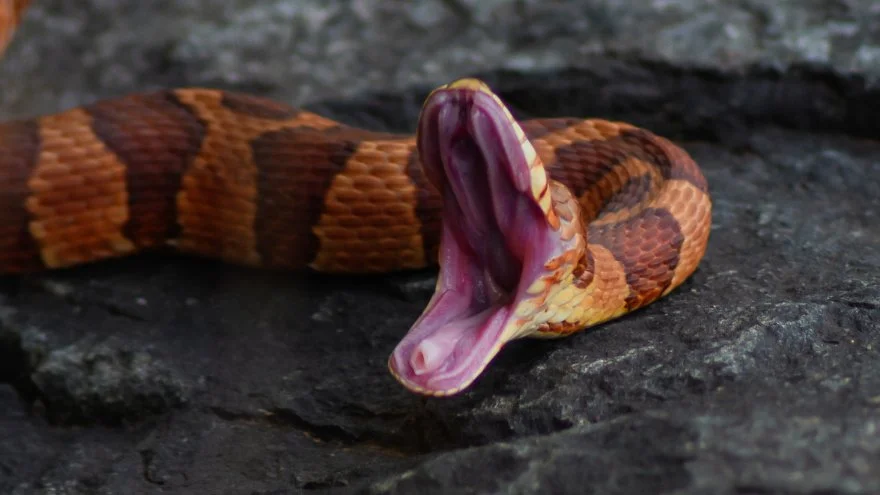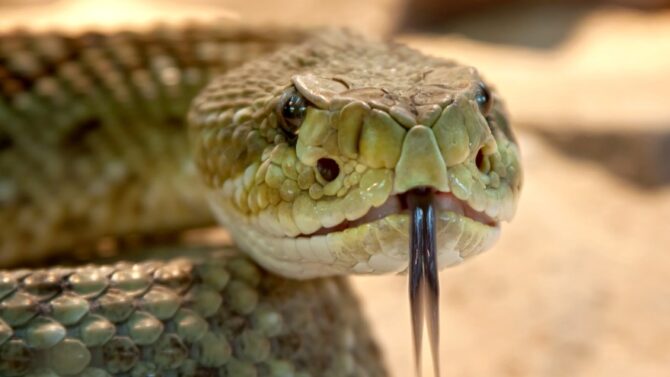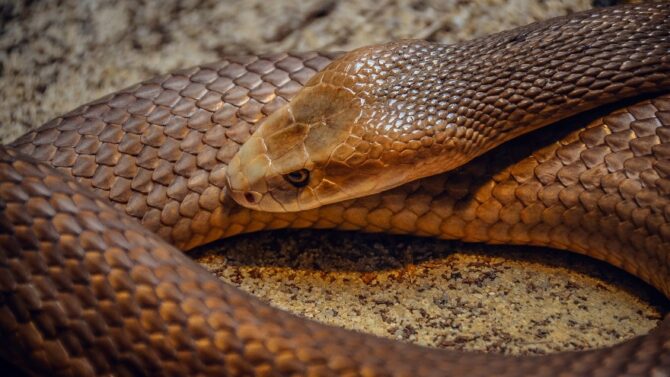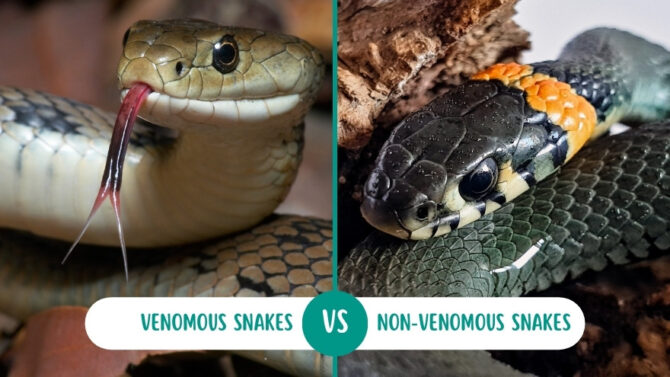Snakes are cold-blooded animals known to have over 3000 species existing in different parts of the world.
Like every other creature, they communicate through sounds, which include hissing, rattling, and growling. What about whistling? Are there snakes that whistle?
It is unlike snakes to whistle, but they may do so accidentally. Some species like the corn snake are known to release whistling sounds periodically.
Snake whistles more when shedding. It may have loose skin in its nostrils which causes its breathing to sound like whistling.
What Sounds Do Snakes Make?
All animals communicate, mostly through the medium of sound and body language. Like dogs bark and lions roar, snakes also use sounds to communicate.

They make sounds for various reasons, including communication, mating, or defense mechanisms.1
The various sounds snakes make include:
Hissing
Snakes hiss when their breathing becomes heavy. The sound is produced from the movement of air in and out of their nose and mouth.
Hissing is the basic method they use to protect themselves and express anger. They can achieve this sound through the aid of a hole connected to their windpipe, which is called the glottis.
The glottis has cartilages that vibrate once the snake breathes sharply. When this happens, a hissing sound is released.
This sound is the most popular sound associated with snakes worldwide, especially species like cottonmouth, bull snake, etc.
Growling
The cobra is commonly known to growl; it raises its head while standing on its tail when it perceives danger, producing a growling sound similar to that of a dog.
This is especially common amongst king cobra snakes, and it can be scary for someone who’s not used to snakes.
Cobras generally have a timid temperament, but when they feel threatened they can flare up.
This would cause them to growl and appear bigger than they normally are. The intention is to scare predators, humans included.
Shrieking
This sound is made mostly by pine snakes. They have a vocal cord to release the shrieking sound, almost like a strong wind. This vocal cord is known as the laryngeal septum.
This is what they use to produce shrieks. Not all snakes have this vocal cord, which is why shrieking is mostly associated with pine snakes.
Shrieking is done mostly for the same reason as hissing and growling. The purpose is to scare off predators.
Farting
Snakes release air from their cloaca. The gas pops and sounds like a fart, just like humans. The snake has to release this sound with force, which is also called cloacal popping.
They don’t pass gas the way humans do because of their diet. As strict carnivores, they avoid plant materials that are usually responsible for the gas we pass. They tend to excrete more or release a liquid to deter predators.
Rattling
The rattle sound is more common amongst rattlesnakes though other snake species produce this sound.
However, some snakes have rattle tails but do not produce the rattle sound. Other snakes produce the buzzing sound by moving their tails against leaves, serving as their defense mechanism.
Can Snakes Whistle?
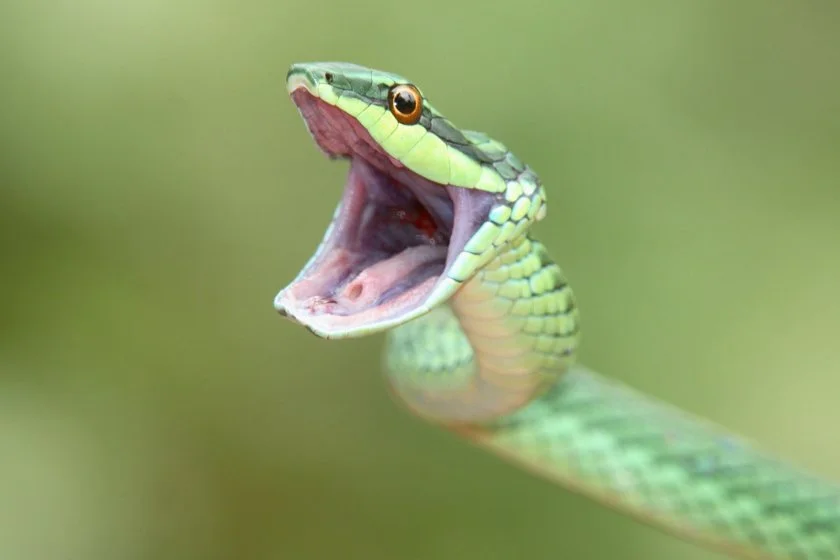
Whistling is one more sound that snakes make, though it is less common than the above-mentioned.
Snakes whistle for many reasons, all of which seem to be unintentional. Also, not all species can whistle. The sound is reserved to a few.
There is another link snakes have to whistling besides them making the sound. A popular belief states that you’re likely to attract snakes if you whistle at night. However, that has been proven to be a myth.
When Do Snakes Whistle?
Having established earlier that snakes are not intentional whistlers and the normal sound they are known for is hissing and sometimes growling, let’s get down with why some whistle.
During the shedding cycle
Shedding is the process by which snakes eject the outer part of their skin at regular intervals. This activity is controlled by their hormones and connects with their growth.
Some snakes experience shedding 4-8 times a year. The shedding is determined by many factors, including the temperature of their living environment, how often they eat, the amount of food taken at each meal, and their activity level.
Older snakes shed less compared to the younger ones, and during this period, there could be a loose layer of skin in their nostril, causing their breathing to sound like a whistle, which is the most prevalent cause of whistling in snakes.
After swallowing prey
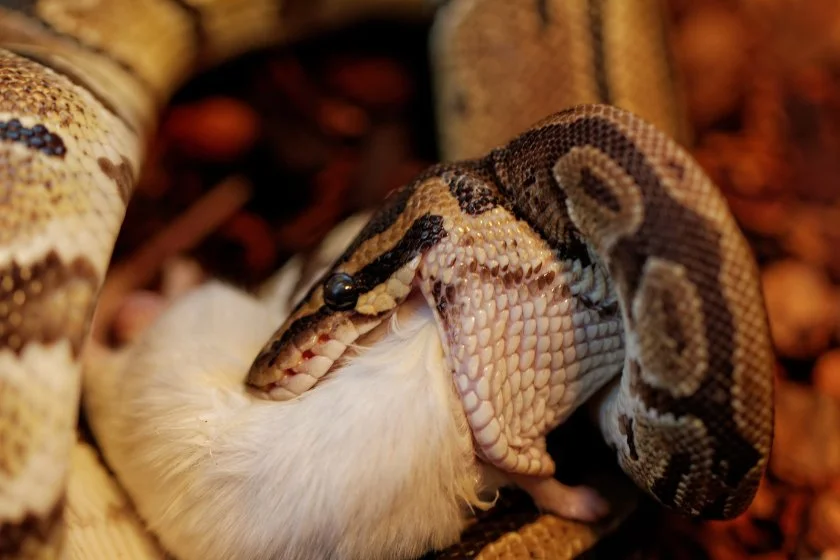
Some snakes start whistling after swallowing their prey as they inhale and exhale air heavier than normal.
They produce the whistling sound as they try to push some more air from their lungs. The snake could repeat this once or twice and will not do it again until it swallows more prey.
When they have a respiratory infection
Another occurrence where the snake can be said to whistle is if it has an infection in its respiratory organs.
When you notice the whistling sound, check the snake well to see if there is the presence of mucus, clogging of nostrils or other signs and symptoms of infection.2
If that is the case, this could mean they are sick, and you should consult your vet. Nonetheless, it doesn’t call for panic as the snake can be fully healthy and still whistle.
As a defense mechanism
When faced with danger, snakes can do lots of things to defend and protect themselves. Some snakes emit whistling sounds to scare off approaching danger and defend themselves.
An example of a snake species that does this is the Russell Viper. Its whistle can scare off an approaching predator.
Different Species of Snakes That Whistles
Some snakes are known to release whistling sounds occasionally. They include:
Corn Snake
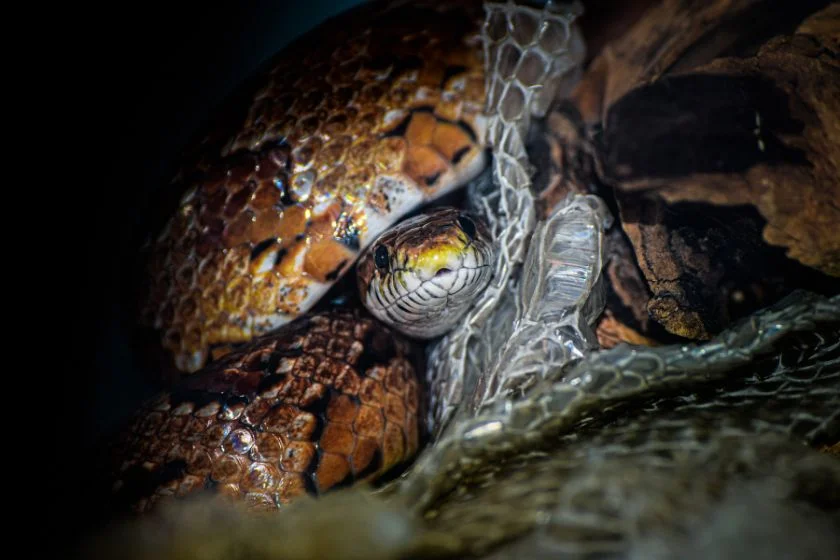
The Corn snake is a gentle snake that is not venomous; they are popularly known to make gentle pets. They are brightly colored and very attractive.
Corn snakes are constrictors; they wrap themselves around their prey to squeeze and overpower them before swallowing.
The name corn snake originates from the mark on this snake’s belly, which looks like maize, or Indian corn.
Like other snakes that whistle, when corn snakes are in their shedding period, some loose skin might clog their nose. They have to breathe a little harder than usual, releasing a whistling sound.
Ball Pythons
Ball pythons are also called royal pythons, and they are among the snakes people love to have as pets. They are non-venomous and the most minimal in the python family.
Their occasional whistle is so quiet that you must listen well to hear them. The sound comes in when there is a clog of skin in their nostril or when they have respiratory problems.
Russell Vipers
This species is very venomous and are present in some parts of India. It becomes aggressive when it feels threatened and is well known for its whistling sound and long fangs.
Whistling is its defense mechanism to scare threats away; the viper does this by allowing lots of air through the nostril.
Its whistle is very loud and mimics the sound of a pressure cooker which is very different from that of a ball python.
Conclusion
In general, snakes do not produce whistling sounds except when they are shedding and require more air pressure from their lungs to breathe or as a result of respiratory infections.
However, even in these situations, only a few can whistle.
References & Notes
- Carpenter C. C., (2015). Communication and Displays of Snakes. American Zoologist.
- Parrish K., Kirkland D. P., Et. al., 2021. Nidoviruses in Reptiles: A Review. Frontliers.
